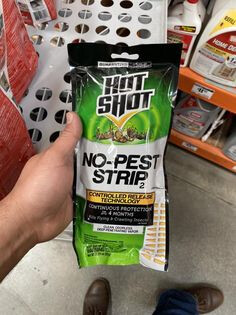Someone on facebook posted this in a beginner cornsnake group.

He’s claiming breeders and keepers use this for years??? INSIDE? Like, I can see it being used outside the enclosure, but inside?
IDK, the math aint mathin’
Someone on facebook posted this in a beginner cornsnake group.

He’s claiming breeders and keepers use this for years??? INSIDE? Like, I can see it being used outside the enclosure, but inside?
IDK, the math aint mathin’
I’ve seen it kill a lot of snakes. In a very well ventilated environment it’s not as bad but in a poorly ventilated enclosure (which many are) it’ll kill them off quickly.
I’m partners in a rodent company and we also sell livestock to pet stores (snakes, hamsters, guinea pigs, etcs). A local reptile store closed down with no planning and dumped about 50 snakes on us. At least half had mites. One of our former employees thought this was a good way to quickly kill mites and decide to take initiative and put them in some of the worst tubs. He killed a half dozen Honduran milksnakes over night.
Unfortunately I’ve found that there are breeders out there who recommend this, despite the instructions on the packaging making it very clear that this is not to be used around anything you want to keep alive. There’s several videos on YouTube of people telling people to use these in close proximity to animals. Some of those breeders sell on MM.
You’re not supposed to even use that product in a room that has people in it for more than 4 hours per day. The packaging itself tells you it’s highly toxic and yet even as recently as two months ago a breeder uploaded a video saying to put these unprotected in a snake’s enclosure. It just goes to show that time in the hobby does not equal being educated. These people will go, “Well it works for me I’ve never had mites and my snakes are fine” but we don’t know the long term effects of exposure like that.
I have known people that cut strips off of it and toss them in film canisters with a few holes popped in them and then toss those in the tubs. They work, but they are viciously toxic and if you put too much in or the snake manages to pop the top off or water gets in then you begin to slowly poison your animals
The most I have ever done with those was take a quarter of one and put it inside the bottom of the trashcan, under the bag. And the can has a lid. The only reason I did that was because gnats would tend to congregate in the bag and breed in the waste. And once the outbreak was under control, the strip came out
This. This is what I was told as well.
As much as I’m an advocate for NOT using dichlorvos, it is the only thing that will touch any of the mites I’ve been sent over 2023/24. It isn’t for everybody.
Permethrin just isn’t effective anymore, and the research corroborates this. Fipronil worked up until Frontline spray wasn’t available anymore.
Afoxolaner is promising, but it is prescription only, and you have to know how to dose it.
Bottom line, these are all poisons, and they have all killed reptiles. Got to take the bad with the good sometimes.
Fipronil sprays are still available just frontline isn’t.
Part of the reason Frontline was discontinued is because it was becoming less effective against mammalian ectoparasites. I have also heard from very reliable people that we were beginning to see the development of resistance in Ophionyssus, so its lifespan was limited in the hobby
I have become a very firm believer in the use of predatory mites to help control Ophionyssus. I now pretreat all my naturalistic cages with them when I first set them up
Evolution will always win in the resistance versus toxin race. Short of extinction, the predator versus prey race will maintain